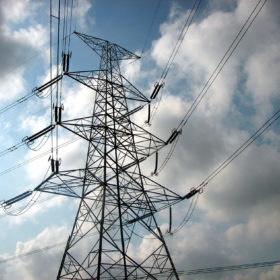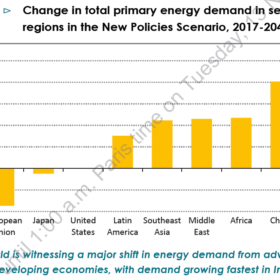The long read: PV’s Polish cold turkey
Considering the remarkable advances made by the solar sector since the Rio ‘Earth Summit’ of 1992, PV was notable by its absence at the Convention of Parties climate change summit held by the UN in Poland.
Adani to build 5 GW data center parks in Andhra Pradesh
The Gujarati multinational will invest Rs700 billion to set up world’s first 100% renewable powered data center parks in the state.
India will auction 80 GW of solar, wind capacity by March 2020
The Indian Government plans to tender 60 GW of solar and 20 GW of wind capacity by March 2020. This would complete the planned auctions for its targets of 100 GW solar and 60 GW wind installations by 2022, leaving two years for project execution, according to an year-end review by the Ministry of New and Renewable Energy (MNRE).
Green Climate Fund signs $100 million pact for India’s rooftop solar
The Green Climate Fund (GCF) and the National Bank for Agriculture and Rural Development (NABARD) have signed an agreement to infuse US$100 million into an ambitious $250 million project designed to unlock private sector initiatives for the creation of rooftop solar power capacity across India.
Auroville search engine will crowdfund solar power for 100 villages in Tamil Nadu
Sustainable development expert Auroville Consulting has launched the Solar Village Search Engine to help fund its Solar Village Initiative, which aims to power 100 villages in Tamil Nadu with solar by the year 2030.
India could generate all of its power from renewables by 2050
A renewable energy system in 2050 is technically possible and economically viable for India, with the levelized cost of electricity falling from the current €58/MWh (Rs4,626) to €52 under one scenario in a recent report, and to €46 in another that included demand for power, water desalination and non-energy industrial gas sectors.
Enhancing energy trading in South Asia
The Indian Ministries of External Affairs and Power, in collaboration with the Confederation of Indian Industry (CII), organized the South Asia Power Summit 2018, held recently in New Delhi. The daylong conference highlighted that diversity of energy resources in South Asian countries brings the opportunity to provide affordable, low-carbon energy in the region. The business case for enhanced energy trading in the region, and challenges faced in inter-country electricity trading were important elements of this discussion.
India’s energy demand will more than double by 2040 – IEA
The world is witnessing a major shift in energy demand from advanced to developing economies, with demand growing fastest in India – according to the International Energy Agency’s (IEA’s) latest World Energy Overview.
Solar still gaining as coal’s share of national capacity falls
India saw an increase in PV’s share of national generation capacity in the third quarter, as 2 GW more solar was added despite worries buffeting the industry.
India powers ahead as Asia set for 355 GW of PV by 2023
Despite political hurdles in key markets including China and Japan, Asia remains highly active. This year, 59 GW of solar is expected to be installed and due to further system price declines, a phase-out of subsidy schemes can be offset.















